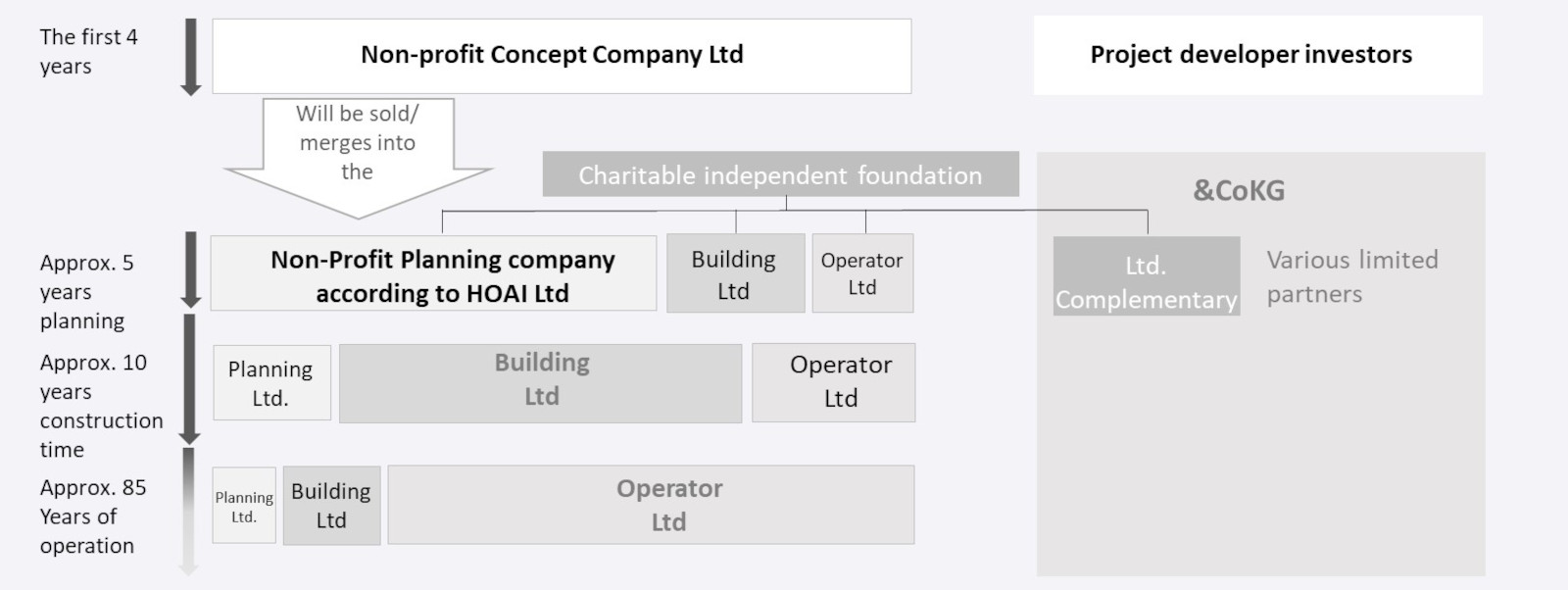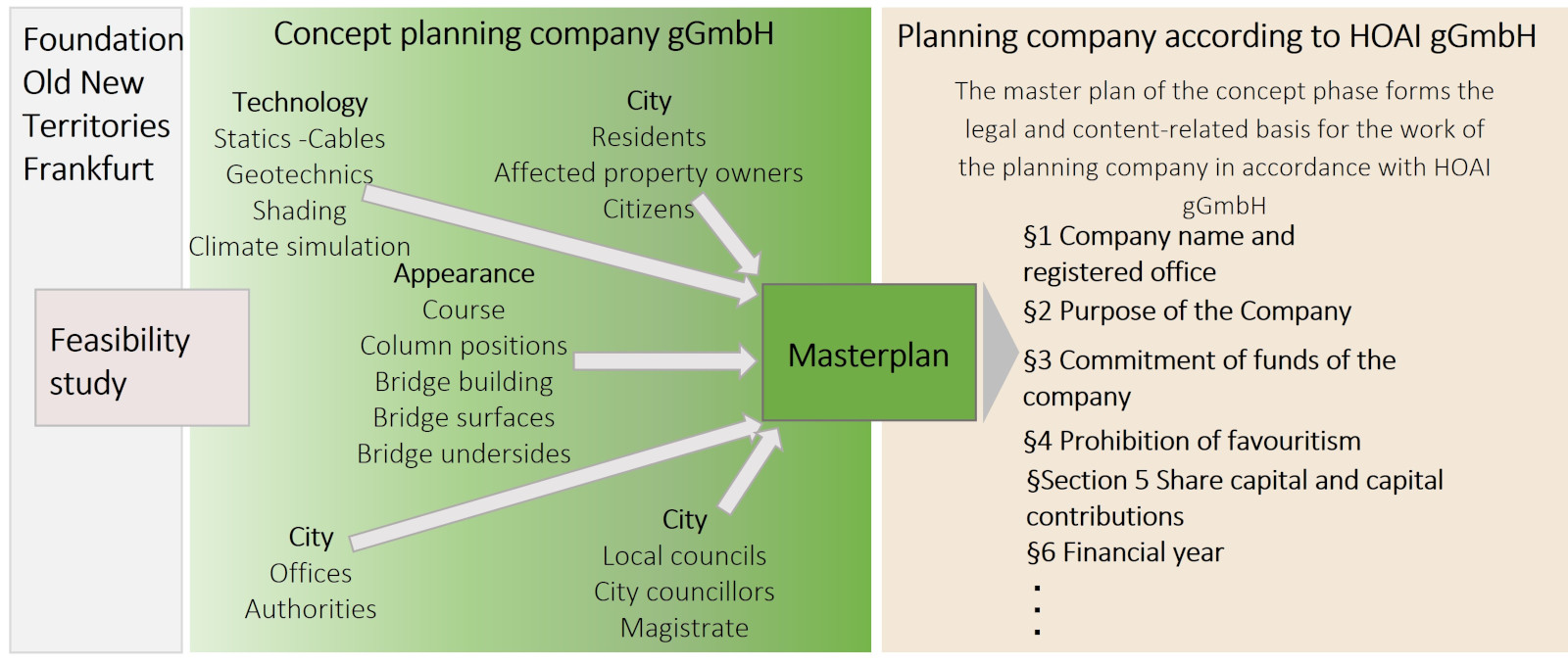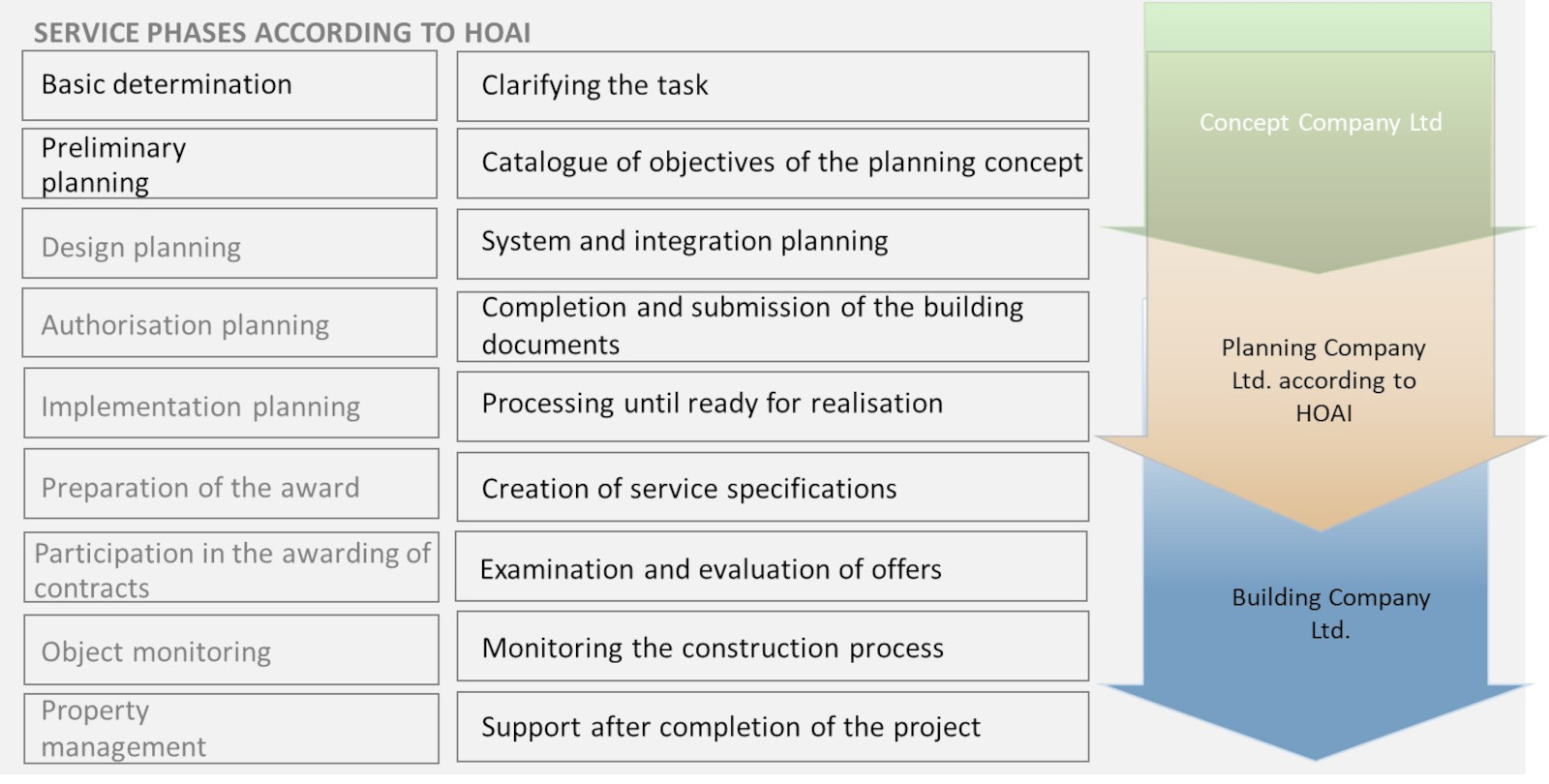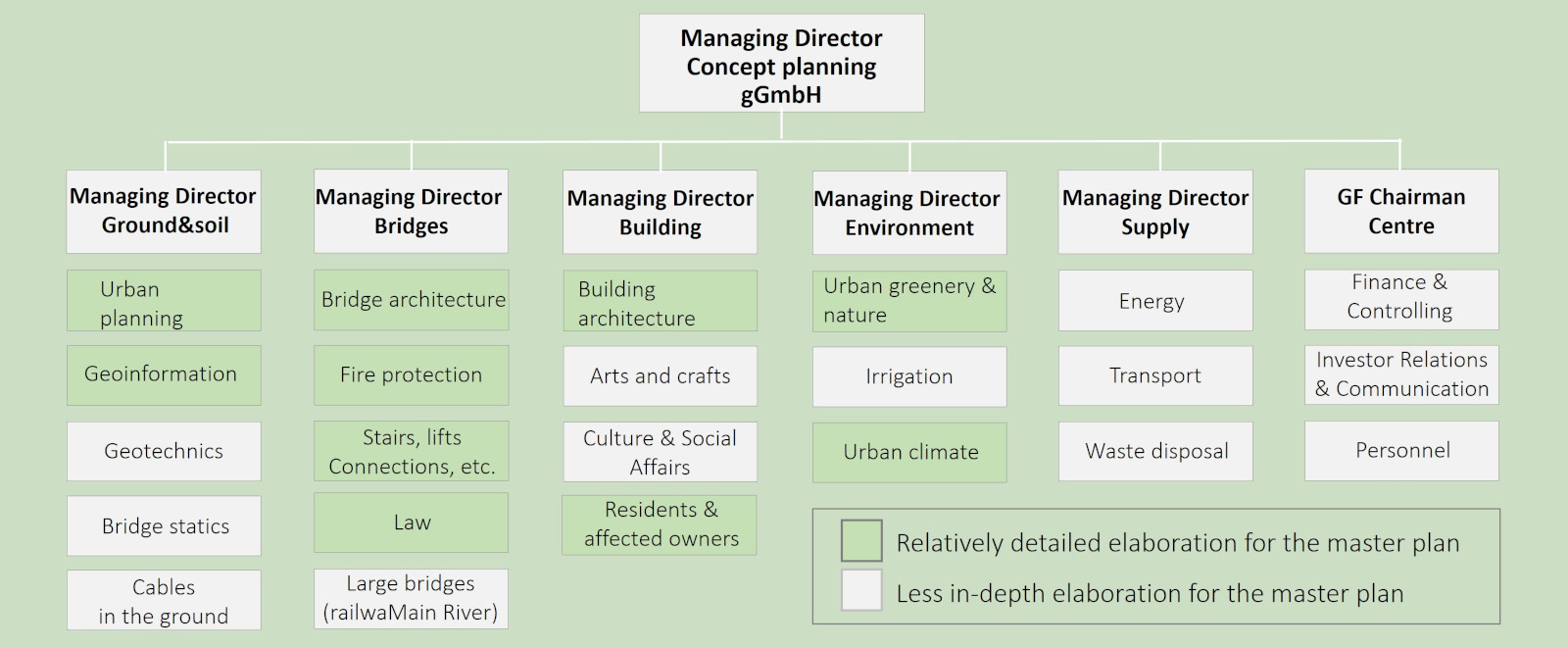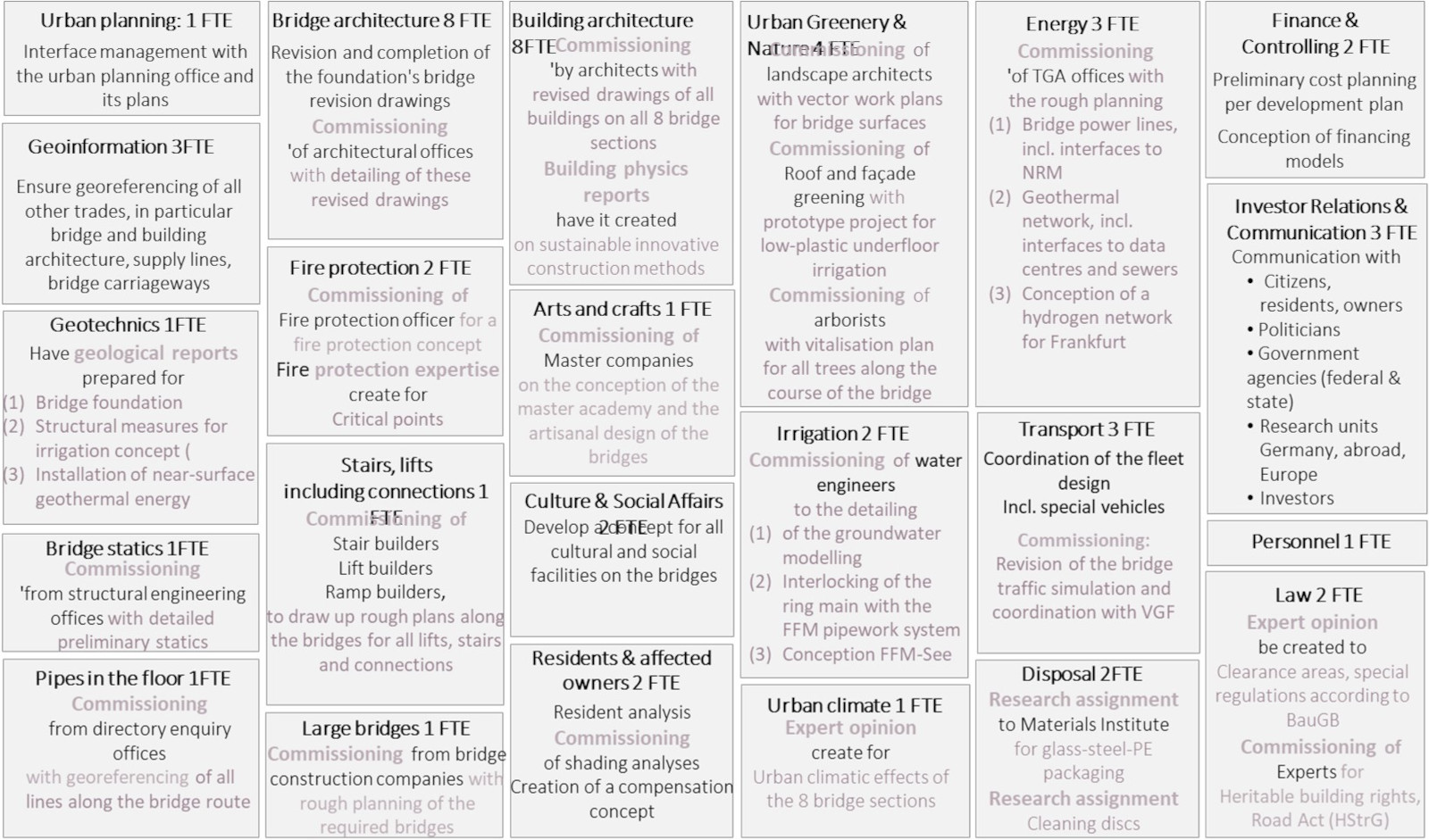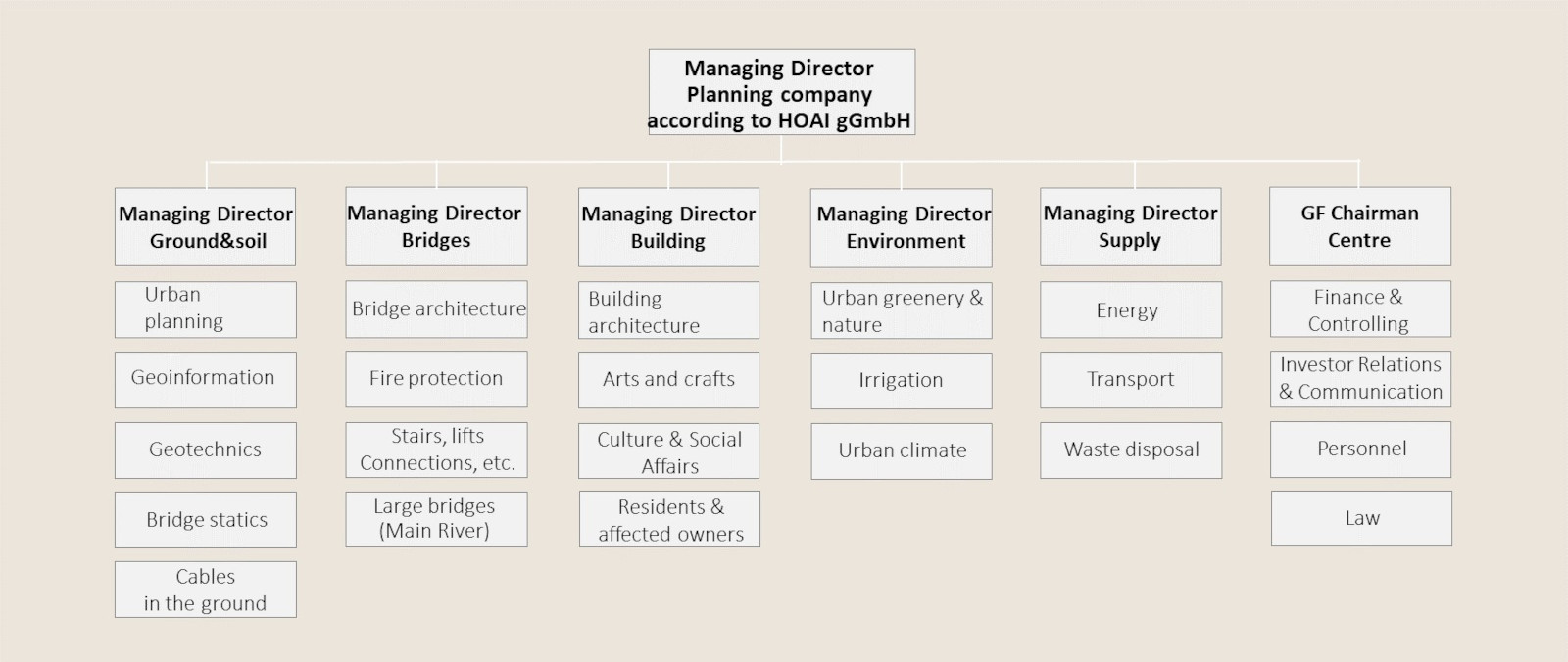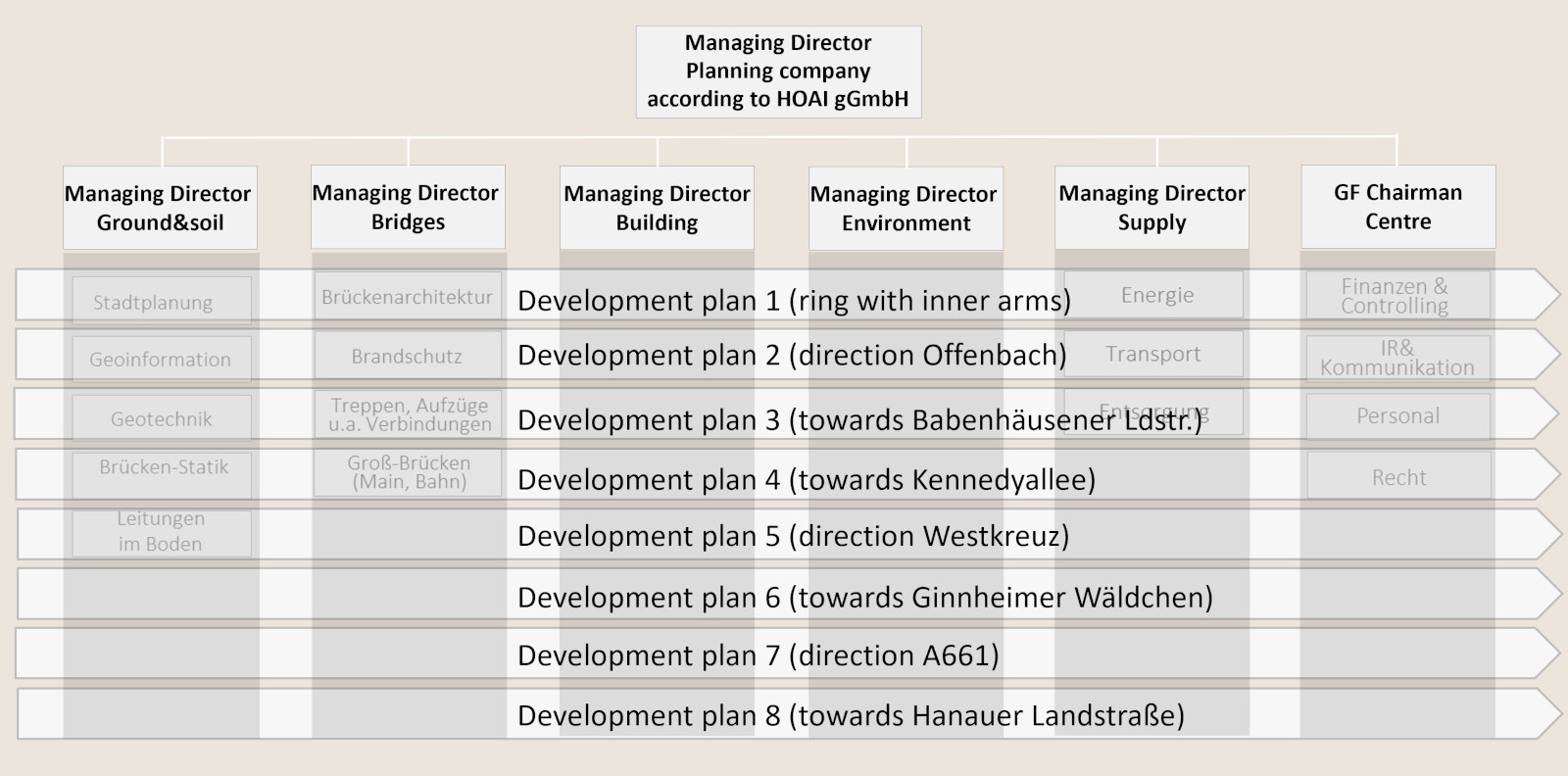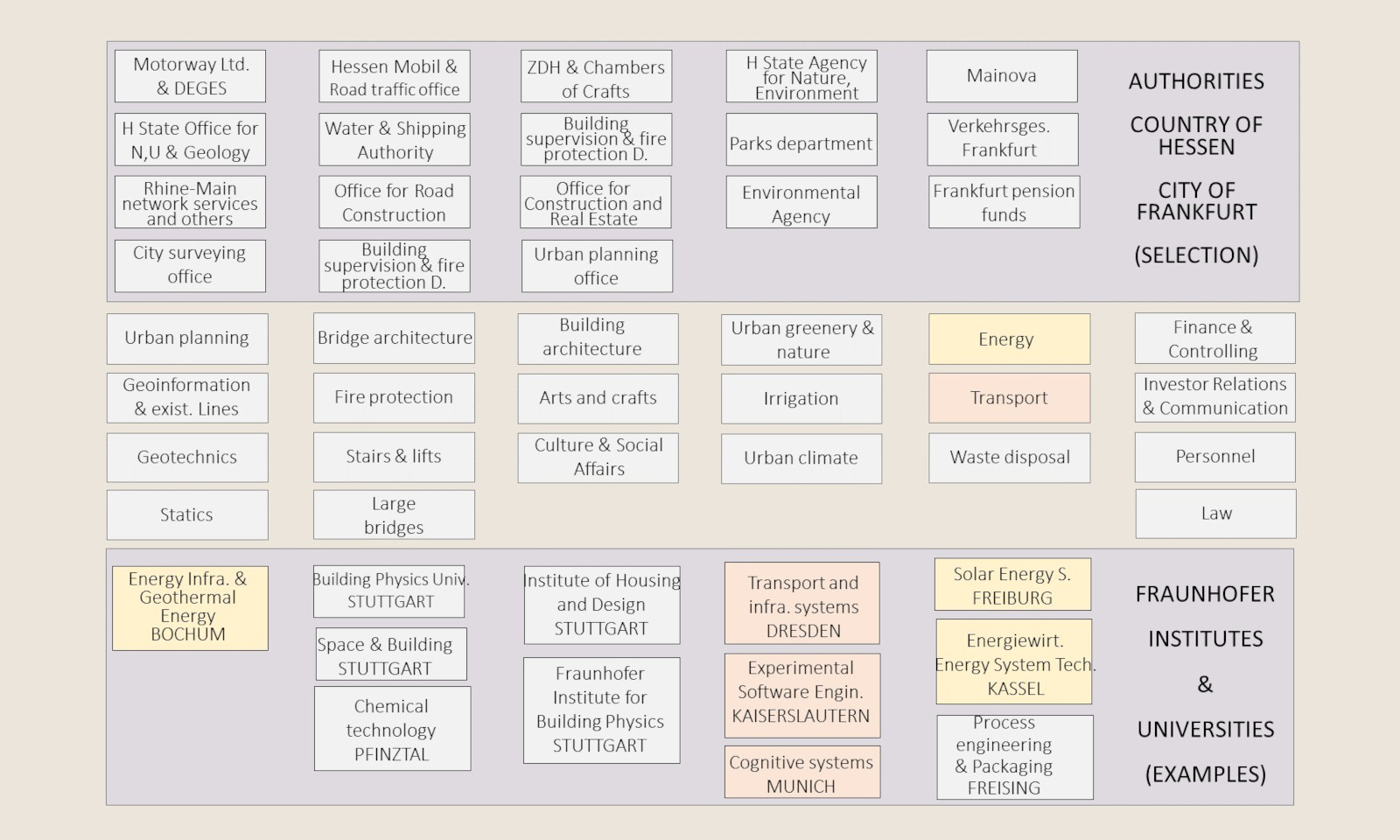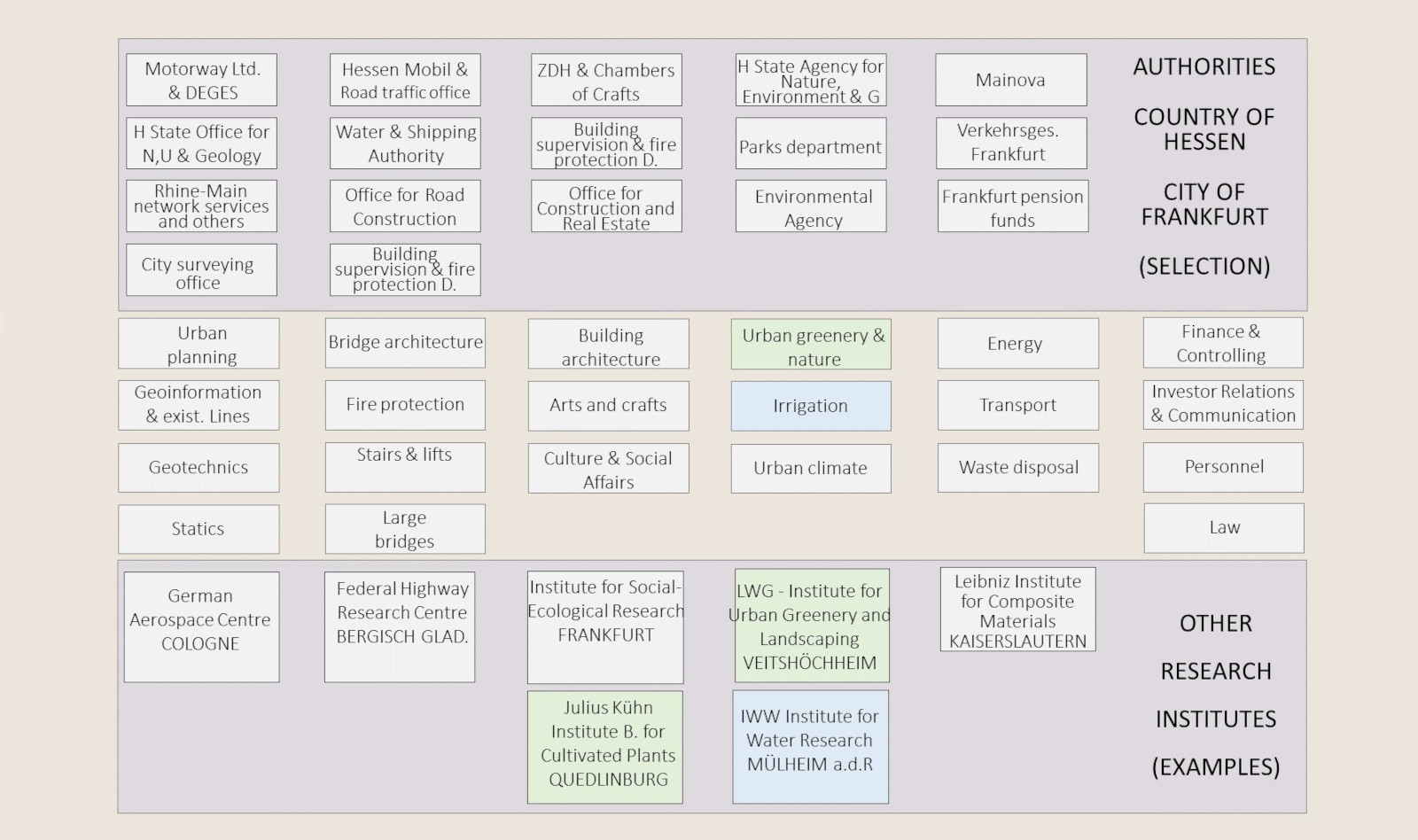The Frankfurt Bridges are planned as a showcase for innovation, in which technologically innovative concepts are integrated into urban planning - and in such a way that they can also serve as a "blueprint" for other cities in Germany and around the world
The Frankfurt Bridges are conceived as an attractive investment that simultaneously implements optimal urban planning for the common good during their construction and the first decades of operation.
To ensure that such a detailed innovative concept and its implementation in practice not only benefits Frankfurt, but also finds its way into the routine urban planning of all municipalities in Germany, it is necessary for sovereign institutions to have a platform in the planning phase in accordance with HOAI where they can consult directly with research and science on the planned innovations and implement the corresponding specifications or changes to specifications in their respective offices.
The planning company in accordance with HOAI of the Frankfurt Bridges creates these "innovation circles" and makes the meetings with them an integral part of its planning process, whereby the financing of the personnel costs for the office employees involved must be covered by state subsidies and the Concept Company Ltd may only remunerate the experts from research and science. These innovation circles therefore have the character of a public-private partnership.
If, for example, an inner-city infiltration and extraction concept for the water supply of green spaces is developed in the course of the Frankfurt bridge construction, it makes sense to bring the Hessian State Office for Nature, Environment and Geology together with experts from research and science in a working group from the outset, so that findings from what is feasible, what must be considered and tested and what must be avoided become available as empirical values for all other offices in Germany that are responsible for the water and soil of municipalities. These should be able to build on the results of these "innovation circles" or utilise them directly.
The Innovation Circle participants from research and science can in turn take the results beyond Germany and out into the world with project work abroad and collaborations with international research institutions.

